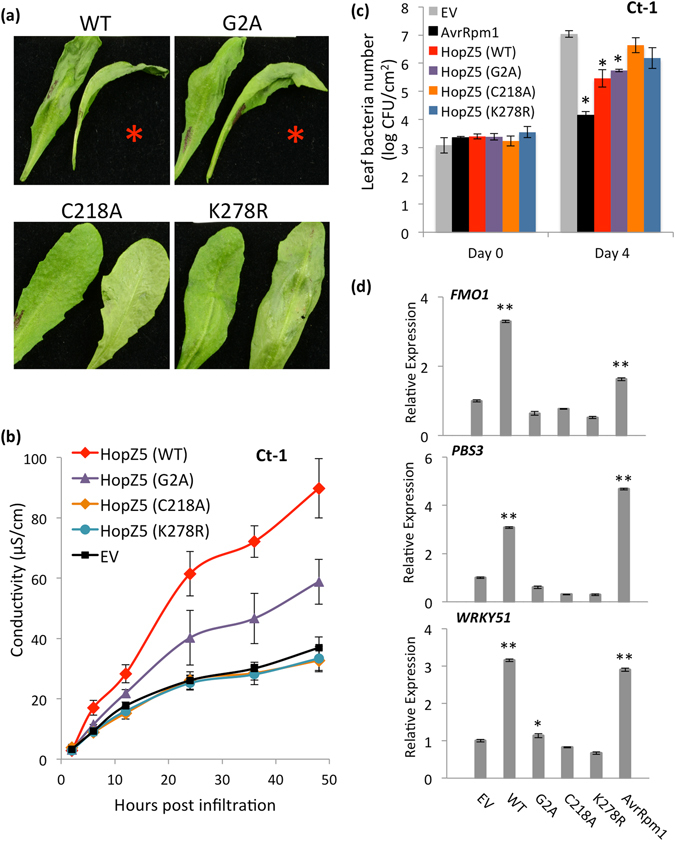Figure 4.

Putative acetyltransferase activity and myristoylation of HopZ5 are required for avirulence. (a) Development of the hypersensitive response in the Arabidopsis accession Ct-1 against HopZ5 variants. P. fluorescens Pf0-1 (T3S) (1 × 108 CFU/mL) carrying hopZ5-HA (WT), hopZ5(G2A)-HA, hopZ5(C218A)-HA or hopZ5(K278R)-HA was blunt syringe-infiltrated into leaves and photographs taken 20 hours after infiltration. The red asterisk indicates development of the hypersensitive response. (b) Electrolyte leakage from Arabidopsis accession Ct-1 leaf discs after infiltration with P. fluorescens Pf0-1 (T3S) expressing HopZ5 variants, as in (a). Bacteria (1 × 108 CFU/mL) were blunt syringe-infiltrated into the leaves. The error bars indicate the standard error from four technical replicates. The experiment was conducted five times with similar results. (c) Pto DC3000 growth in Arabidopsis accession Ct-1. Pto DC3000 carrying hopZ5 variants, as in (a), was blunt syringe-infiltrated at 5 × 105 CFU/mL into Arabidopsis leaves, and bacterial growth was determined 4 days post-infection (4 dpi). Error bars represent standard error from six technical replicates. Asterisks indicate results of Student’s t-test between selected sample and EV for that accession; *(P < 0.05), **(P < 0.01). The experiment was conducted nine times with similar results. (d) Defence gene expression in Arabidopsis Ct-1 in response to HopZ5 variants, as in (a). P. fluorescens Pf0-1 (T3S) (1 × 108 CFU/mL) carrying the indicated construct was blunt syringe-infiltrated into leaves and defence gene expression determined from extracted RNA by quantitative polymerase chain reaction. Expression for each defence gene is relative to internal EF1α expression and defence gene expression for EV samples indicated. Error bars indicate standard error from three technical replicates. Asterisks indicate results of Student’s t-test between selected sample and EV for that accession; *(P < 0.05), **(P < 0.01). The experiment was conducted five times with similar results.
